Fueled by Fire
Winter Bikepacking with a Wood Stove
-Bjørn Olson
Originally published in BikePacking.Com
Throughout the day, the bulging mass of ice that clung to my beard indicated that the temperature remained well below zero. As the sun began to set behind the boreal forest of Interior Alaska, the mercury dropped even lower. My partner, Kim McNett, and I pushed our laden bikes off the Iditarod Trail into the unconsolidated sugar snow and began setting up our shelter in the falling twilight. We assembled our handsaws and began cutting wood.
An hour and a half later, we both reposed inside our floorless mid-shelter, stripped down to our long underwear, making hot drinks and dinner atop our titanium wood stove, and dried our damp liner socks above the mini-inferno. Outside, the frost dipped down to minus 40 degrees.
My first outdoor love affair was mountaineering. Climbing mountains and glacier travel trips in winter informed my self-reliant attitude toward winter bikepacking. One of the many challenges one must overcome on self-supported expeditions in the cold is managing moisture. Damp clothing, tents, and sleeping bags are difficult—often impossible—to defrost and dry once wet. As the days and weeks go on, moisture from breath and sweat clings to this important insulation, becoming frozen, heavy, and less insulative.
For many years, my solution to address the moisture I generate through body sweat was to employ vapor barriers (VBL), which can be anything from plastic bags to fancy, non-permeable base layers. These thin layers are worn next to the skin or with a thin poly or merino wool layer underneath. Any sweat you generate is then blocked before it has an opportunity to seep through and into the insulative layers. Interestingly, we sweat to the point of saturation but then stop. Without the VBL, sweat will continue until all the insulation is saturated, but with the VBL only a small amount of sweat is generated.
To protect the down in my sleeping bag, I would sleep in a VBL sack or with VBL top and bottoms on. Few experiences are more miserable than waking up damp and clammy from a night of sleeping in VBLs and changing into frosty clothing in freezing temperatures. On mountaineering trips, a frozen sleeping bag can be turned inside out and loosely strapped to the outside of a backpack to allow the trapped moisture to sublimate. This technique, however, is impractical on bike trips.
After a few days on any winter bike expedition, I inevitably found myself desperate to reach a shelter cabin with a wood stove or a generous host willing to invite me inside and allow me to dry out frozen tents, clothing, and sleeping bags. Meeting and visiting with people along these routes is one of the most memorable and meaningful aspects of these trips, but feeling dependent on others is an anathema to an ethic of self-sufficiency.
Alaska has a small population but is rich with pioneering individuals who think outside the box and devise creative methods to overcome obstructions to wilderness travel. At the top of this long list is adventurer, Dick Griffith. Dick began undertaking long, wilderness treks in Alaska with a lightweight ethic in the 1950s and continued to do so well into his late 80s. He was the first person to employ a lightweight, single-person raft with a break-apart kayak paddle in Alaska, which led to the packraft revolution we see today. After suffering terrible frostbite and many other experiences with deep cold, Dick eventually sewed a fireproof wood stove jack into his Stephenson Warmlite tent and began to use a small wood stove on his winter ski expeditions.
“I’d never touch that country again without a stove,” he once told me. After years of suffering myself, I was convinced and decided to try this method.


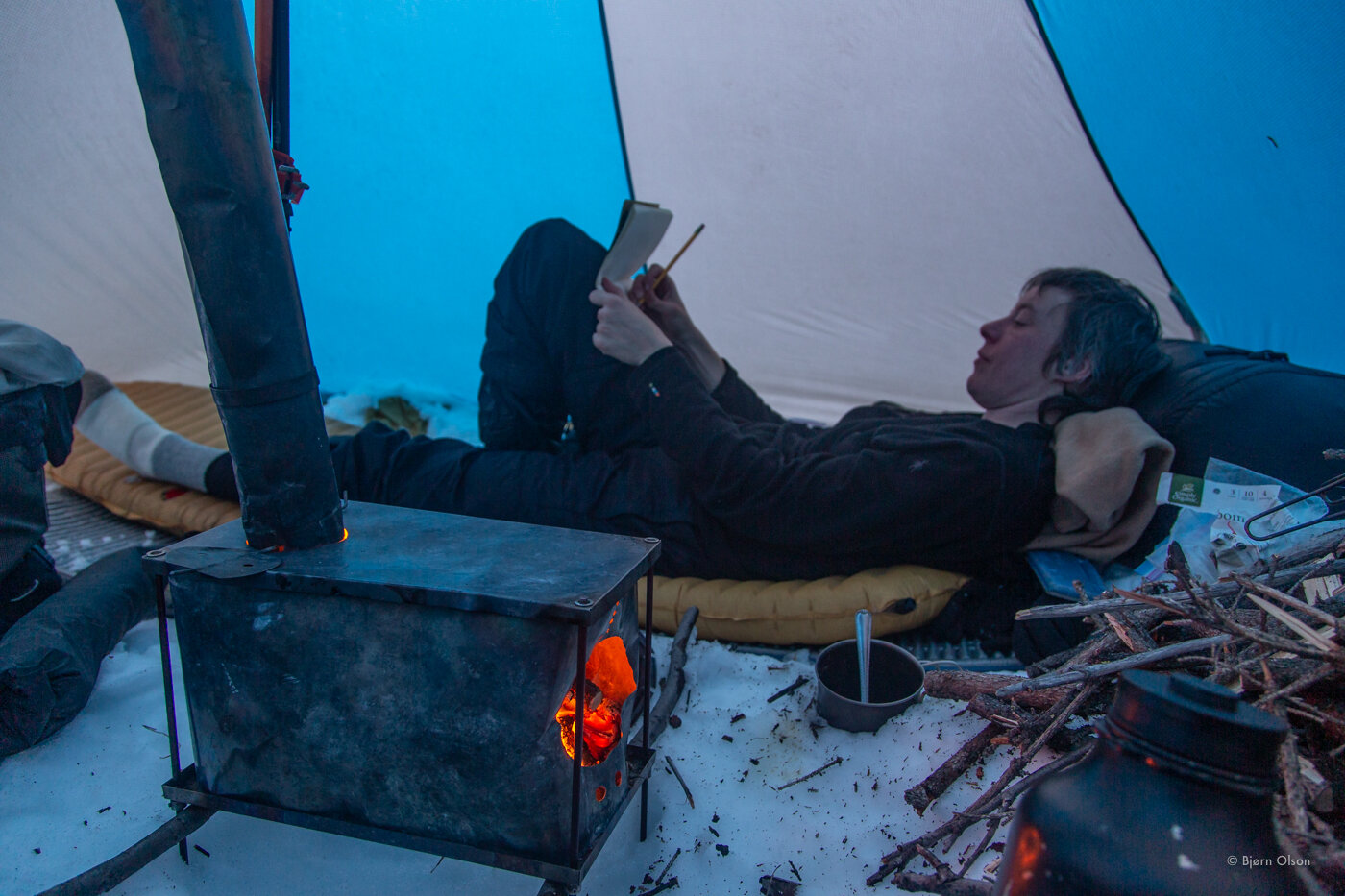
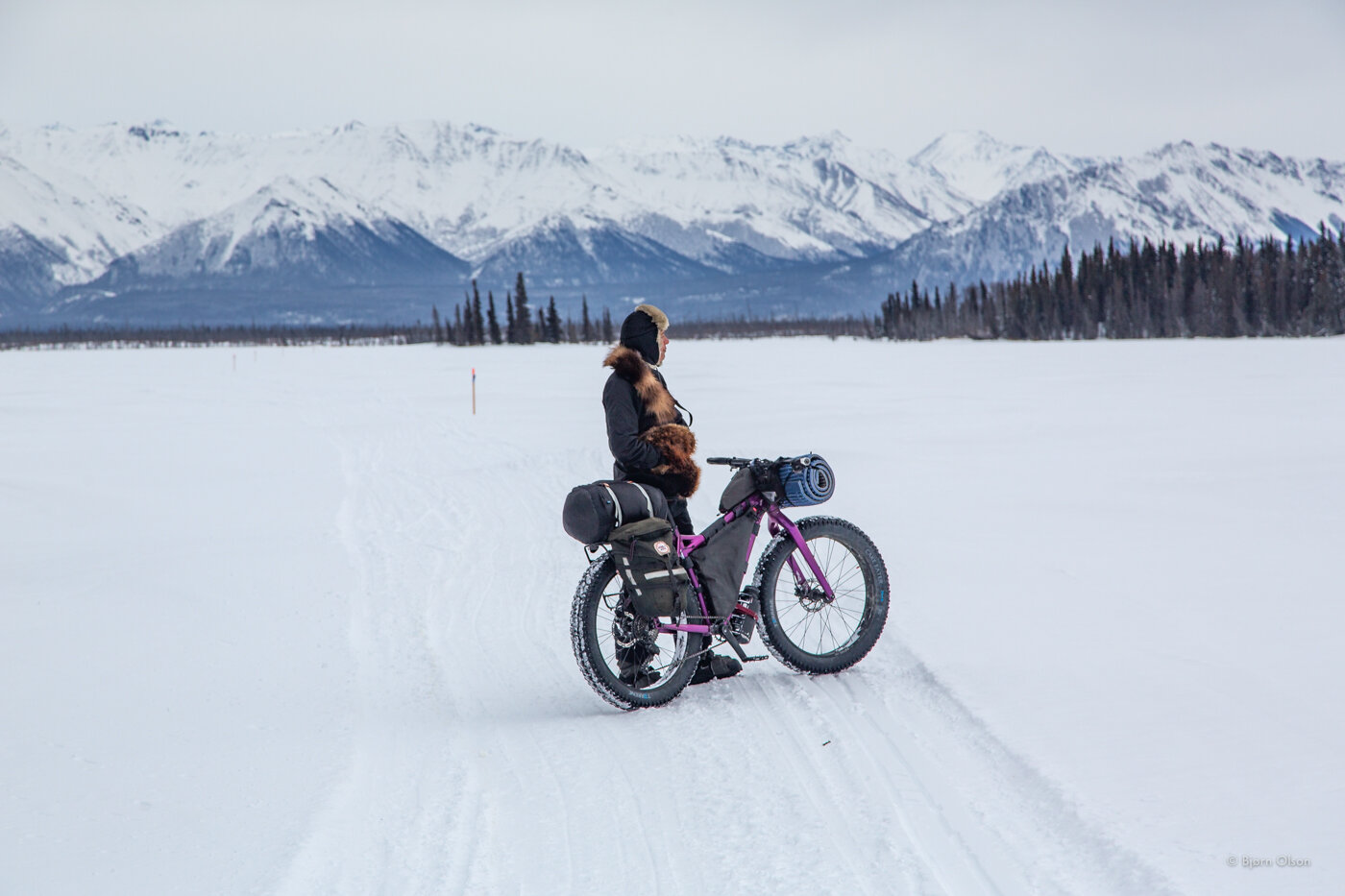
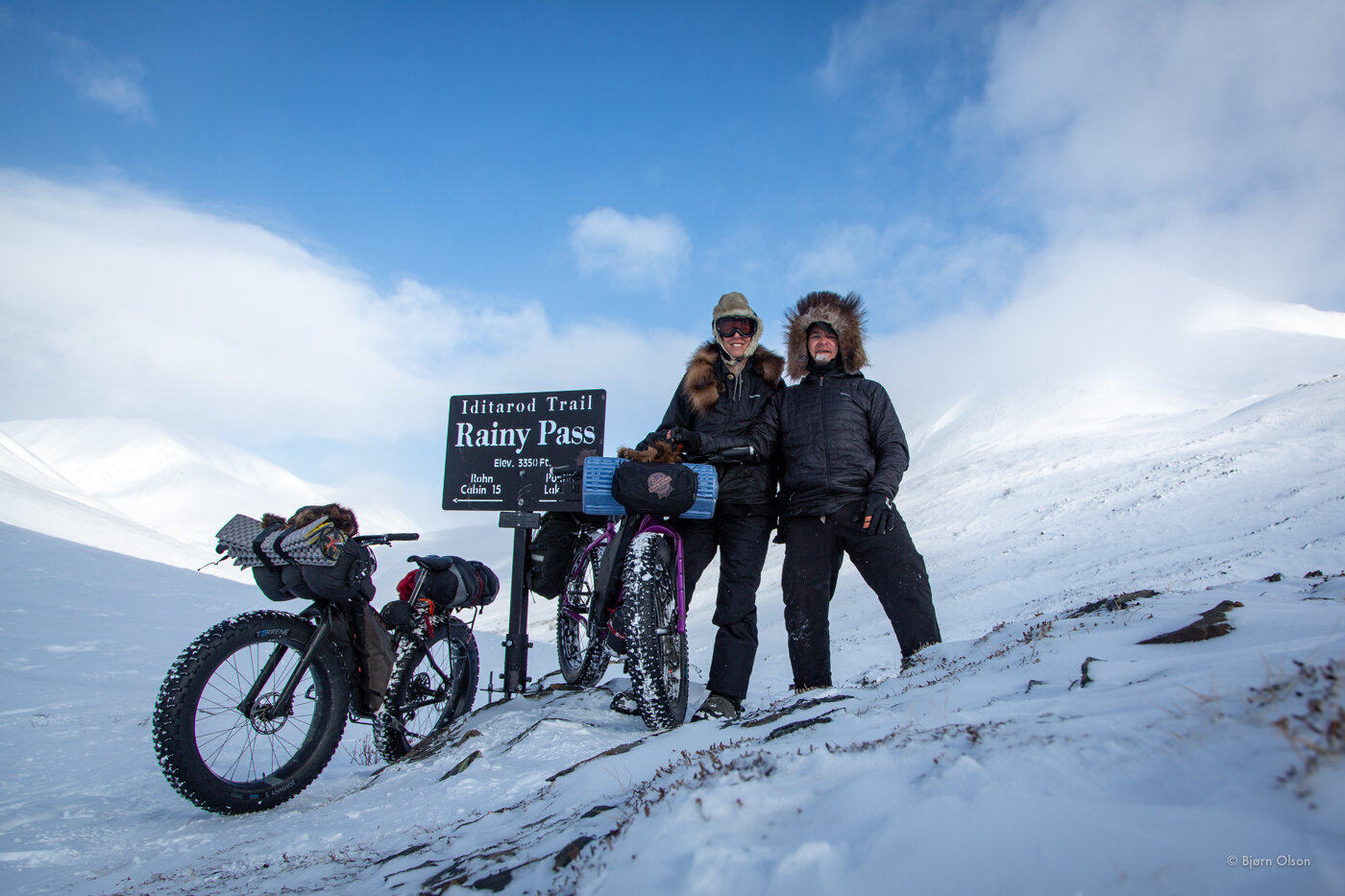
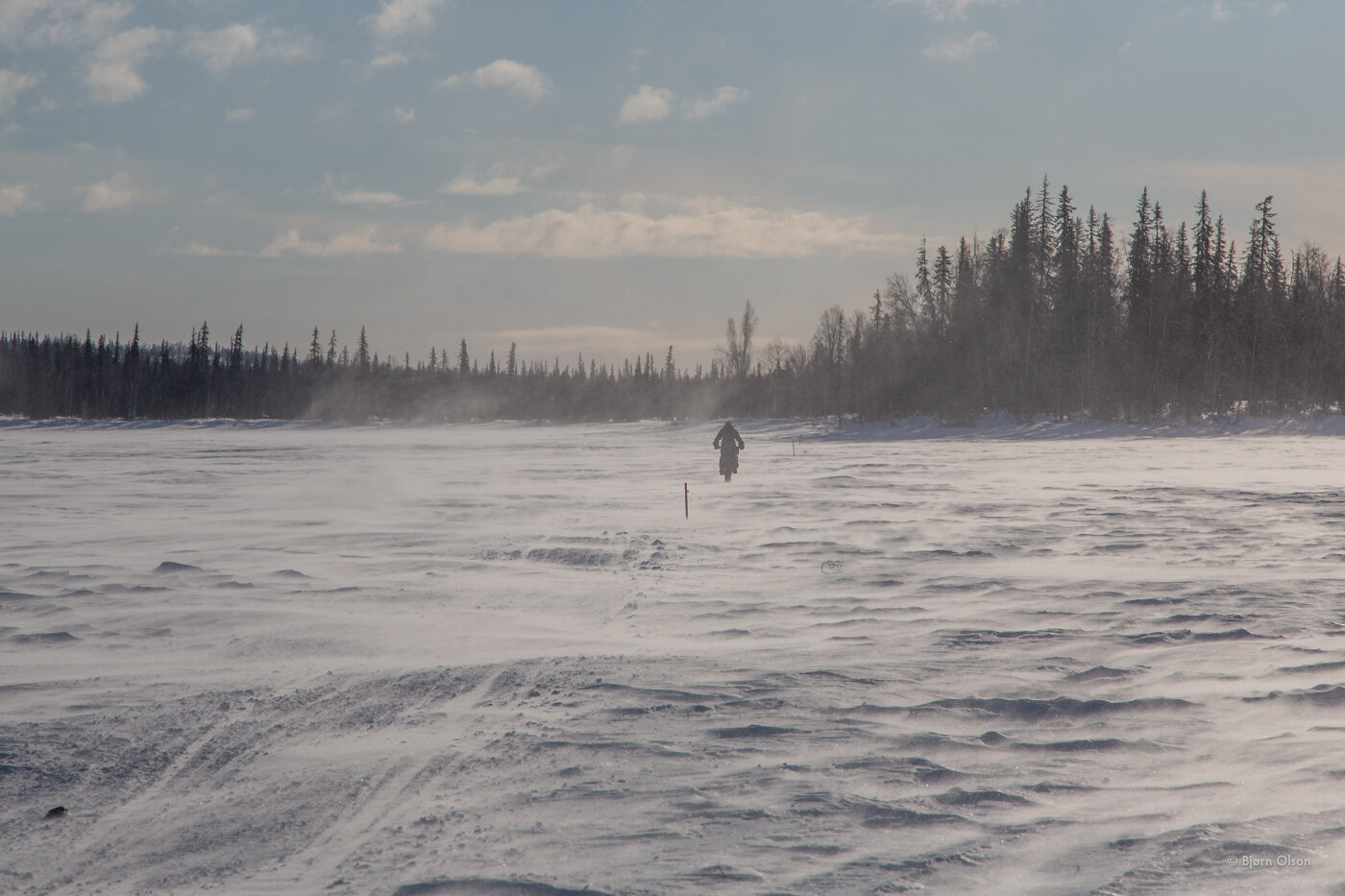
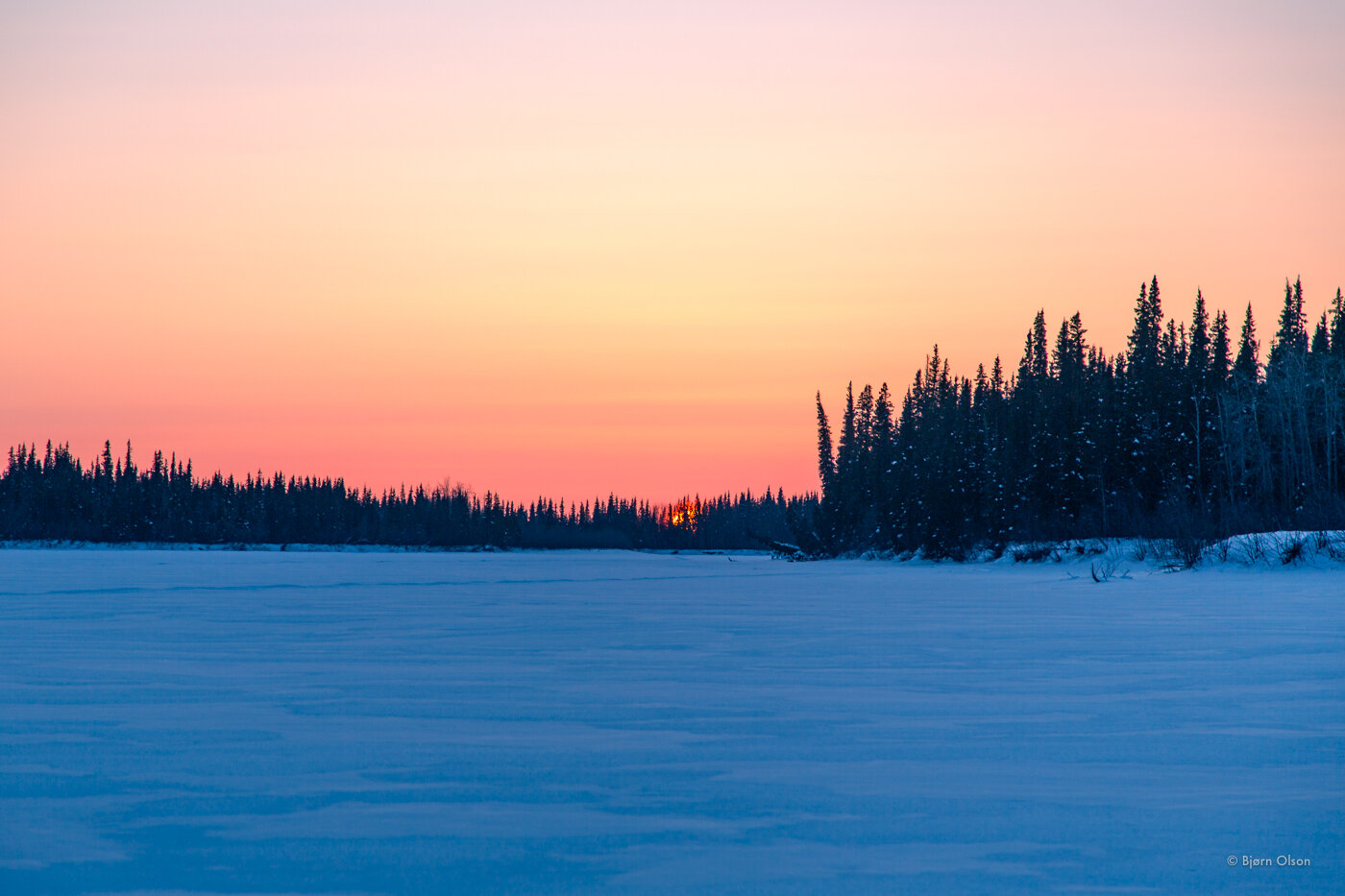
In 2013, I modified a worn-out, floorless silnylon mid-shelter to work with a collapsable titanium wood stove. That March, Kim and I spent 30 days cycling over 1,000 miles on a network of snow trails that led us from southern Alaska to the Arctic community of Kotzebue. All of our water melting and cooking was done on the wood stove and we were able to dry our bodies and gear in temperatures as cold as minus 30. I haven’t done a winter bike expedition without a wood stove since.
This March, as the daylight slowly returned, Kim and I felt the seasonal pull to unplug from our busy lives and head into the wilderness. We settled on a 300-mile route along the Iditarod Trail. Although we have ridden through this area several times before, this trip was unique for a few reasons. We biked south instead of north for the first time. And because we are still in the grip of a global pandemic, our shelter with the collapsible wood stove liberated us to do this trip without the need to go indoors as we passed through the village of Nikolai and the Iditarod checkpoints along the way. Perhaps more than ever before, we were grateful to have this particular equipment and the familiarity to know what is possible with it.
Before the pandemic, Kim and I had our sights set on a new-to-us winter route. This proposed trail network, however, passes through many remote villages, deeming the trip unadvisable under the current circumstances. We hoped that by this spring the virus would have subsided. As March approached, we concluded that if we were going to do a winter bike trip it’d have to be something more conservative. McGrath to Willow on the Iditarod Trail seemed like a good option. The dogsled race was modified this year to avoid as many villages as possible and was an out-and-back passing through McGrath. We timed our trip to be on the trail as the teams were coming and going.
We flew from Anchorage on a damp and above-freezing day but were greeted with a breezy, sub-zero afternoon as we departed the twin-engine airplane in McGrath. On our first night, we were thrust into temperatures down to minus 40 degrees, which snapped our survival instincts to attention.
After a few days, we found ourselves in a blissful and familiar state of being, one that I had been craving to reconnect with since the pandemic began, where the rules are simple, the goal singular, and the methods well ingrained: wake up, ride, camp, repeat. Even as non-racers, this sort of winter travel is strenuous and we often have to dig deep to circumvent doubt, flagging muscles, and soreness. We always know, however, that what awaits us after a hard day on the saddle and an evening of chores is a warm mug of tea, a hearty meal, dry clothes, rosy-red cheeks, and a night of peaceful slumber. In our experience, we tend to finish these trips feeling stronger and hardier than when we began.
Kim and I are in awe of the cyclists from Alaska and around the world who compete on the Iditarod Trail. We know all too well what it means to put in a hard day and it’s easy for us to imagine what it must feel like to have to push on into the dark and cold of night to chase the clock. Without these events, it’s likely that the fat bike might not have been developed at all. Now that these bikes and this equipment exist, however, racing doesn’t need to be the only option for extended wilderness experiences on snowy trails.
Kim and I don’t race against competitors; we race storms, spring breakup, and our own time constraints. Our shelter with the wood stove awards us nights of restful sleep and recovery. And, because we rely on it for all our snow melting and cooking, it helps define our expeditions by some of nature’s basic parameters.
For anyone wishing to attempt this method, there are many points to consider and precautions to take. Number one is that you must be willing to sacrifice a floorless mid-shelter and dedicate it for sub-freezing trips only. Once you cut a hole for the fireproof stove pipe material and begin to accumulate errant ember burns in the shelter fabric, it will no longer protect you from rain. If you can accept that, know that we’ve gotten many winter seasons out of each of the two shelters we have used to date. The other obvious consideration is that once the stove is installed and lit, an almost freakish amount of vigilance is required while you learn the boundaries of melty and flammable synthetic things in proximity to a roaring inferno in a tight space. Remember: fire hot! While the stove is ablaze, hyper-attentiveness is always required. But in our years of experience, we have developed a sense of what is an irrational versus a serious concern. With a modicum of precaution, using a small stove in a synthetic shelter is less dangerous than you might at first believe, but it’s important to behave as if your life depends on extreme caution—because it does.
Ours is a hybrid system. We use a collapsible Titanium Goat wood stove in our most worn-out pyramid shelter, into which I sewed a patch of fireproof fabric into an upper triangle of the shelter. In our experience, a four-person mid-shelter is perfect for two people (and no more). Another modification I made to the shelter is to sew a two-foot-wide wide “skirt” of similar fabric around the perimeter, except near the door. After anchoring the four corners of the shelter with stakes, this skirt allows us to add snow around the shelter to help further anchor it to keep out uninvited drafts. Because the skirt is on the outside, this extra snow does not infringe on the precious floor space inside.
After years of trial and error, Kim and I have settled into a nice daily routine. When the sun dips near the horizon in the evening, we begin to scan the environment for our essential ingredients: plentiful dry wood and, if possible, firm snow to camp atop of and for ease of cutting sturdy snow blocks. However, well-compacted snow is a luxury, and we often have to accept what is available.
Once we find what we’re looking for, we both help each other pitch the shelter and cut a small batch of wood together. Each evening, we tend to switch roles: cookie or wood getter. At this point, cookie gathers all personal belongings from the bike, crawls inside the shelter, assembles the stove, and starts melting snow for drinking water, dinner, and hot drinks, which, on average, takes about an hour and a half to accomplish. Meanwhile, the wood getter remains outside and continues to shore up the shelter, cut enough wood into stove-length pieces to see us through the evening and morning, and carve blocks of snow for water-making.
One pro-tip we eventually discovered is to cut two pieces of green willow to set under the stove at right angles on the snow. As the heat from the stove begins to melt a pit underneath the stove, the green willow acts as a bridge to help keep the stove level and secure. Pieces with a 1-to-2 inch diameter and cut into 2.5-to-3-foot lengths do the trick. Because the wood is green, it doesn’t burn even when in direct contact with the stove. We’ve also found that the ends of these willow pieces act as a nice sleeping pad and sleeping bag boundary. Anything closer is in the red-hot danger zone.
After we have both consumed our dinner, a big mug of tea, and have fully filled our 64 oz thermoses with boiling water, we crawl into our sleeping bags, let the fire die and sleep like newborn babies. More than once we have remarked that we get more restful slumber on these expeditions than we do at home.
At the earliest hint of daylight, the cookie wakes first, lights the stove, sets a pot of snow with a little water from the thermos to help accelerate the melting process, and encourages the fire to life, which promptly radiates warmth to the frozen interior of the shelter. Within minutes, frost begins to evaporate, sleeping bags begin to release moisture, and the day is soon met with high spirits and hot coffee.
After breakfast and coffee are consumed and sleeping bags are dried, we both work together to break camp and pack up for another full day on the bikes. An additional trick we have learned is to pour the embers from the stove in a pile onto the snow but to not immediately extinguish them. After fiddling with straps, shelter anchors, and zippers, our fingers are usually chilled. The last thing we do before mounting our bikes is to warm our hands around the embers—a treat bordering on the sublime in negative temperatures.
Bicycles, synthetic fabrics, and collapsible titanium wood stoves are all very modern inventions, but human-powered migration in extreme environmental conditions is as old as our species. We evolved to move our bodies, to explore, and to experiment with the boundaries of our innate possibility. By pairing everything down to the bare essentials, these cold-weather trips remind us of what it means to be alive and human. Once Kim and I made the commitment to ditch the fuel-burning stove and rely entirely on native fuels from our surroundings, this dependence upon the natural world has deepened our appreciation of the regions we pass through and helped us to find our place in it.
Now, like Dick Griffith, I will never touch that country without a wood stove.

